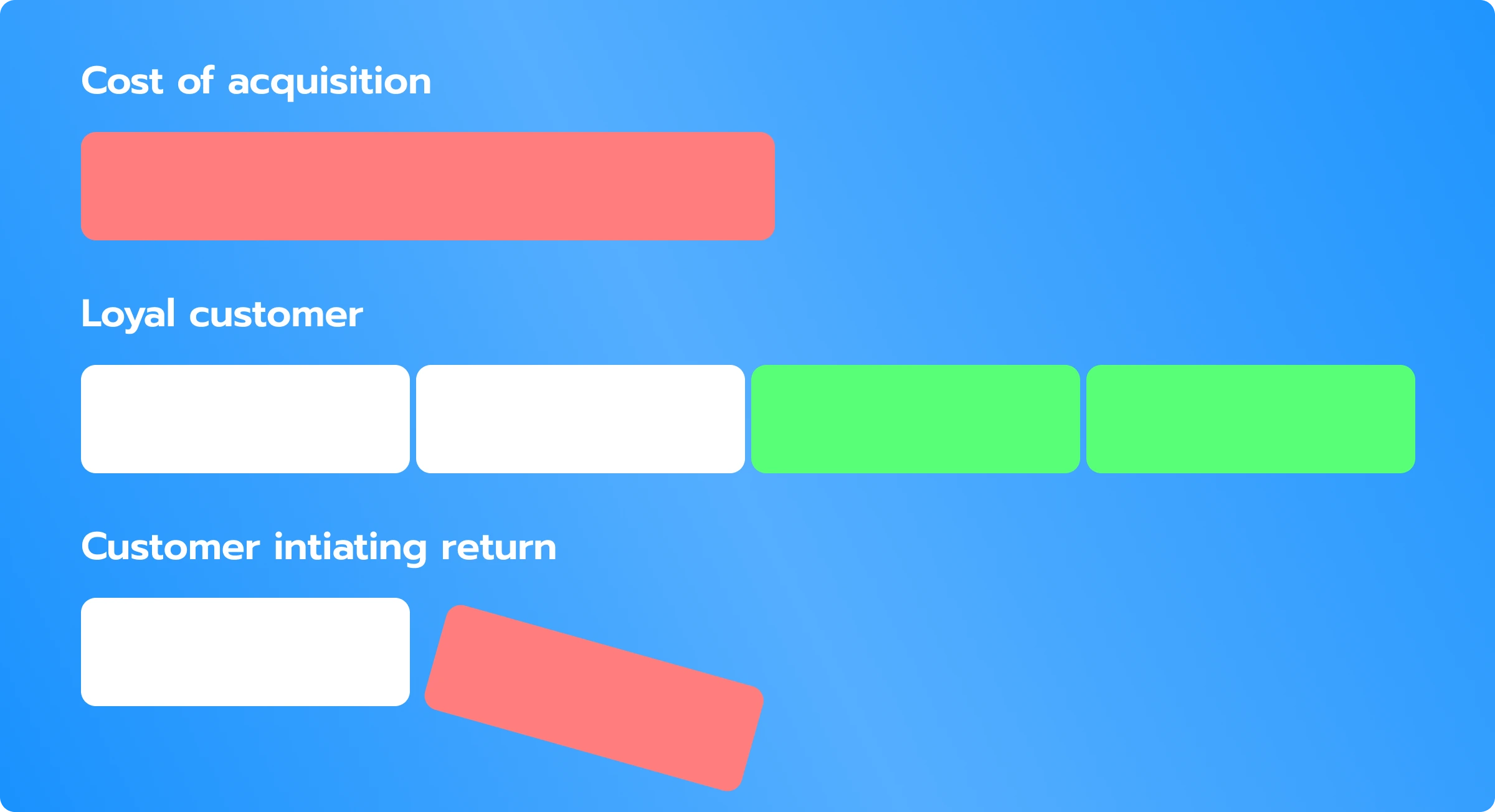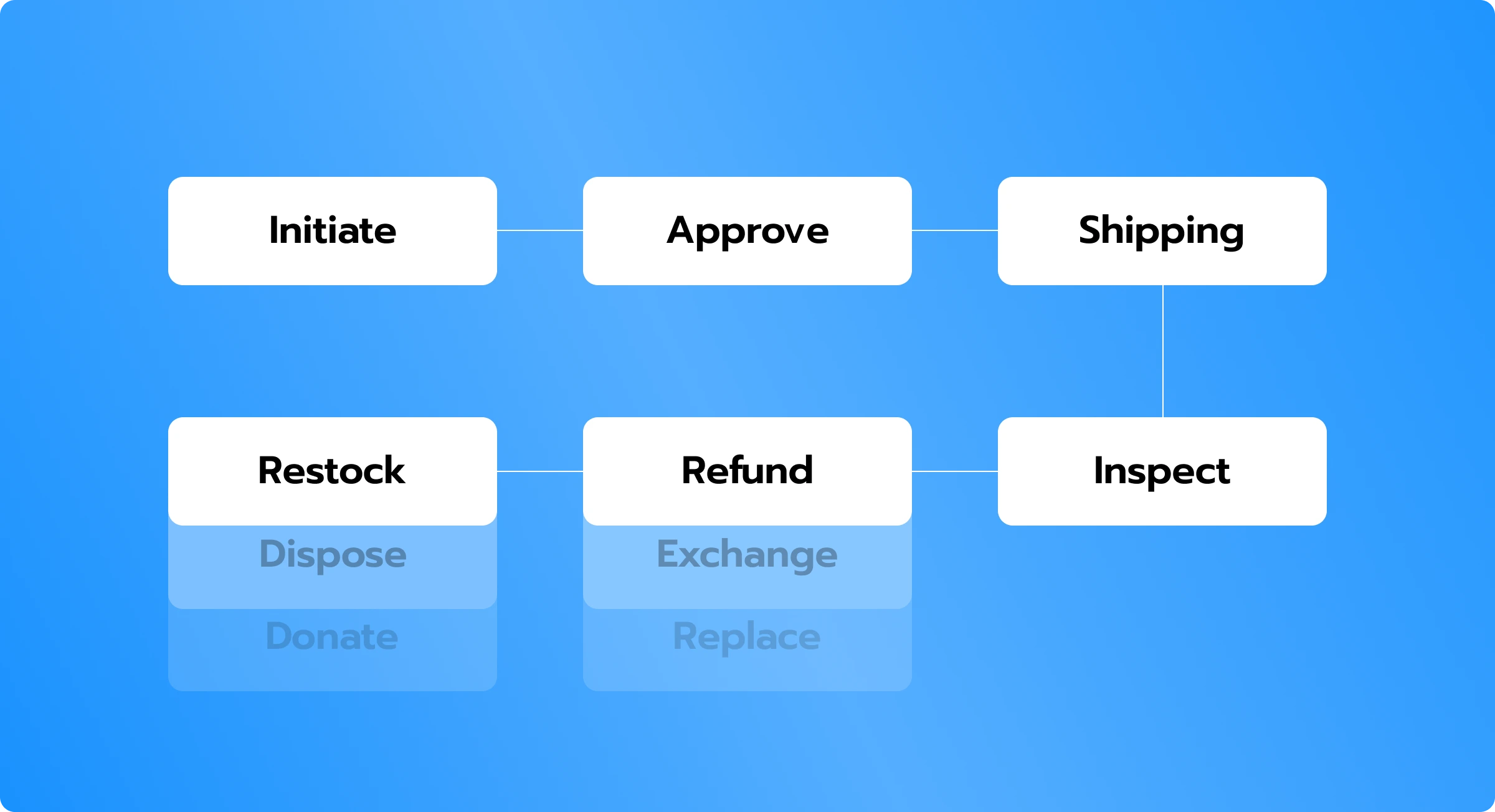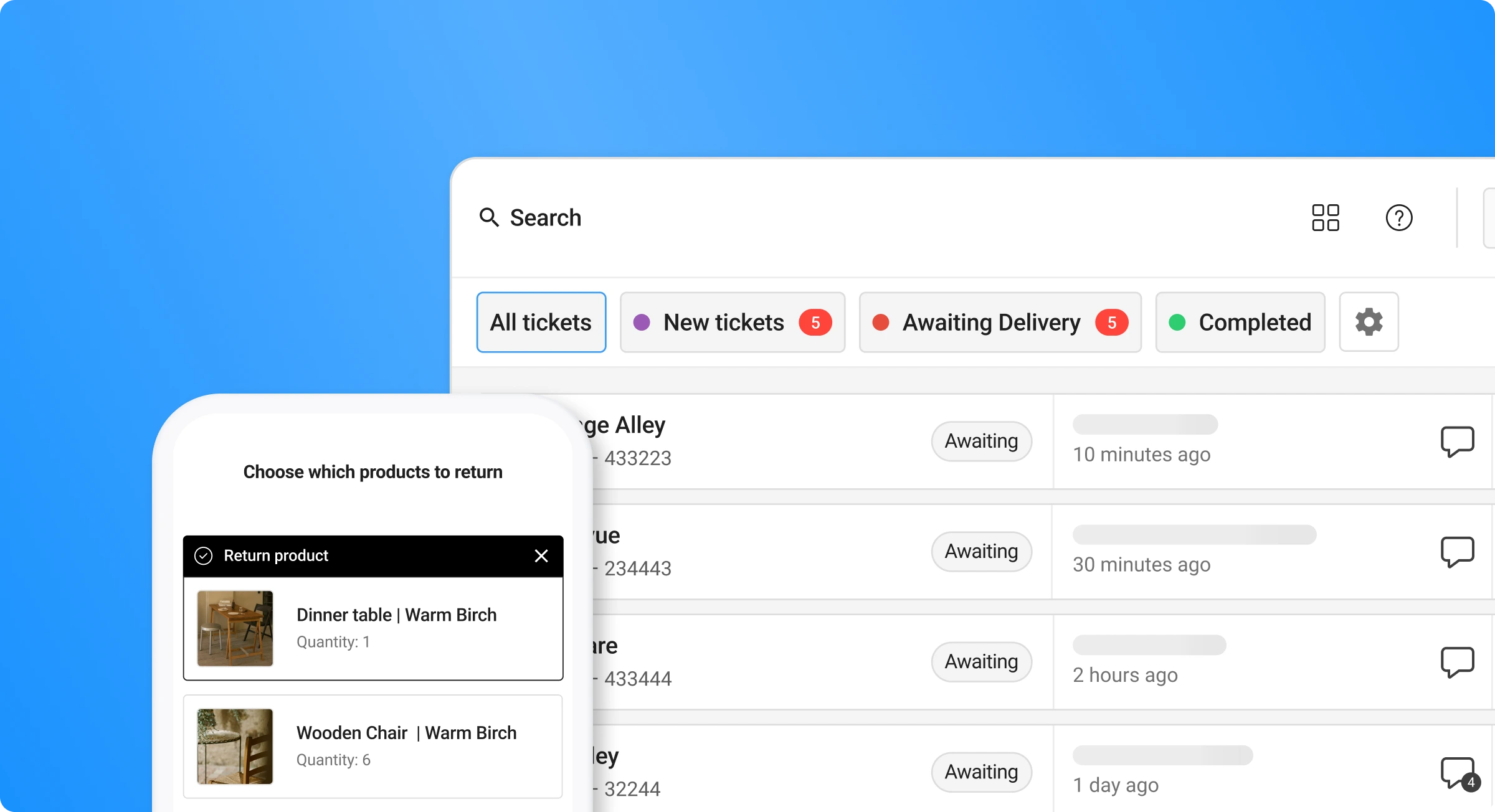How to handle Ecommerce Returns in 2025
Learn why ecommerce returns are hurting your business and how to handle them effectively so they don't ruin your bottom line.

Let’s be honest: ecommerce returns are every retailer’s least favorite part of the business. When a customer clicks “return,” it often feels like all your hard work to win that sale has gone to waste. But what if we flipped the script? What if ecommerce returns became an opportunity to earn customer trust, boost loyalty, and sharpen your entire operation?
Ecommerce returns aren’t going away. In fact, according to Shopify the average return rate for ecommerce was almost 17% in 2024. This is costing retailers billions each year.
In this article, we’ll go over current ecommerce returns trends and how you can set up the absolute best returns process for your business.
Why Ecommerce Returns Matter in 2025
Ecommerce returns have shifted from a simple logistical issue to a core part of the customer experience. Here’s why:
- Customers expect easy returns. Customers want to self-serve and be done with their return in a few clicks.
- Returns impact your bottom line. Every return costs money. Handling them efficiently saves both time and revenue.
- Returns shape your brand reputation. Positive returns experiences lead to repeat business. Poor experiences lead to lost customers and negative reviews. And negative reviews can REALLY impact your business.

Why Are Ecommerce Returns Expensive? It’s All About the Upfront Cost
Selling online costs money. To get customers, you have to invest in ads. Meta and TikTok are popular choices, but advertising on these platforms is rarely cheap. For many ecommerce brands, getting someone to buy often costs more than the product itself.
So, why go through all this? The goal is to win loyal customers who come back again and again. Returning shoppers are much more affordable than new ones.
But when a new customer returns their order, all that money spent to get them is lost. You pay for ads, maybe cover shipping, and then refund their purchase. Sometimes, you even eat the original shipping cost.
There’s another problem too. If your returns process is slow or confusing, you risk losing your loyal customers.
People you worked hard to keep may leave after a single bad experience. That’s a loss no business wants.
A good returns experience is one that is seamless and resolves the customer issue quickly. Claimlane enables you to do that.

The Ecommerce Returns Process: Step-by-Step
To understand the challenges and opportunities in ecommerce returns, it helps to break down the typical process:
- Return Initiation: The customer requests a return through email, customer support chat or a return portal.
- Approval & Instructions: You approve (or deny) the return and send the customer instructions for shipping the item back.
- Shipping the Return: The customer ships the product, often using a prepaid return label.
- Product Inspection: Your team inspects the returned item to determine if it meets your return policy criteria.
- Refund or Exchange: If approved, you issue a refund or ship a replacement product.
- Restocking or Disposal: The returned item is either restocked, repaired, donated, or disposed of.
Sounds straightforward, but each step can go wrong without the right systems in place. That’s where technology, like ecommerce returns software and process automation, can make all the difference.
Common Challenges in Ecommerce Returns
Dealing with ecommerce returns isn’t just about accepting a package and issuing a refund. Retailers face challenges like:
- Handling high return volumes
- Processing returns quickly to satisfy customers
- Preventing fraud and abuse
- Managing shipping costs
- Keeping inventory accurate
For many brands, returns can feel overwhelming. But with a smart approach, these challenges are entirely manageable.
Actionable tips to reduce Ecommerce Returns
Before we go deep into how to reduce ecommerce returns, you have to understand the problem you’re having:
- Are you receiving too many returns? (volume problem)
- Is each return taking too long to resolve (process problem)
- Both? (logistical nightmare).
Step-by-step guide to lowering ecommerce returns
Let's deep-dive into how you can lower returns with some tips and tricks.
Step 1: Optimize how your customers submit a return
If you're customers have to submit a return via. email or phone expect there to be errors.
How to fix it?
Get a return portal that validates data such as order number while collect all the nessary data.
Step 2: Analyze your current ecommerce returns
Look into all your previous returns. If you don't have that data yet, start structuring it. Put it in a spreadsheet or even better get a tool like Claimlane, that does it automatically for you.
Once you've analyzed your ecommerce returns, try to spot trends. Perhaps the 5-10 products of the most returned items are 80% of your total returns.
What to do?
Take your most returned products and understand why they get returned. Are they faulty? Contact your supplier. Sizing issues? Fix your sizing guides.
Step 3: Automate, automate, automate
A broken returns process is filled with manual work. Scattered data, tedious tasks such as generating shipping labels.
What to do?
Short answer: Automate everything you can. With tools such as Zapier and Make you can automate many tedious tasks. If you want to take it a step further, a software such as Claimlane integrates to all your systems enabling you to automate almost the entire returns process.

The Rise of Ecommerce Returns Software
Manual returns management is usually not a viable option for most businesses. Unless you’re dealing with a very low volume of returns.
That’s why more retailers are turning to ecommerce returns software and dedicated Return Management Systems (RMS) to automate and optimize their process.
What is Ecommerce Returns Software?
Ecommerce returns software, such as Claimlane, is a digital tool that helps online retailers manage returns more efficiently. Instead of receiving return request through email, your team can process returns, track items, communicate with customers, and generate reports - all in one software.
Key Benefits of Ecommerce Returns Software
- Faster processing
- Automation speeds up approvals, refunds, and exchanges.
- Enhanced customer experience
- Self-service portals let customers initiate returns and track status without waiting on hold.
- Improved accuracy
- Reduce mistakes in shipping, inventory, and refunds.
- Fraud prevention
- Catch suspicious patterns and prevent abuse.
- Data insights
- Identify trends and root causes to reduce returns in the future.
How Return Management Systems Work
A Return Management System takes the chaos out of ecommerce returns. Here’s how a typical RMS improves the process:
- Centralized Dashboard: All return requests flow into a single interface. Your team can see status, actions required, and customer communications at a glance.
- Automated Approvals: Rules-based logic can auto-approve low-risk returns or flag exceptions for review.
- Self-Service Returns: Customers log in, select items, and print labels without contacting support.
- Integrated Shipping Automation: Generate shipping labels and send tracking updates automatically.
- Inventory Sync: Restock eligible items in your ecommerce platform in real-time.
- Analytics & Reporting: See return rates by SKU, category, or customer to spot trends and take action.
A strong RMS saves time for both customers and support teams, cuts costs, and gives you the data you need to improve your products and policies.
Frequently Asked Questions About Ecommerce Returns
1. What is an ecommerce return?
An ecommerce return happens when a customer sends back a product purchased online for a refund, exchange, or store credit.
2. How can I make my returns process more efficient?
Invest in returns software, automate where possible, and make sure your return policy is clear and customer-friendly.
3. Are free returns worth offering?
Free returns can boost conversions and customer trust, but they also increase costs. Analyze your data to decide what’s right for your business.
4. How do I prevent return fraud?
Use your Return Management System’s fraud detection features to flag suspicious activity, and set clear policies for high-risk items.
5. Can returns software integrate with my current ecommerce platform?
Yes. Most modern solutions integrate with popular platforms like Shopify, WooCommerce, Magento, and others.
Looking for a software to handle your ecommerce returns? Claimlane can help you automate and handle any type of return request. Get in touch today.



